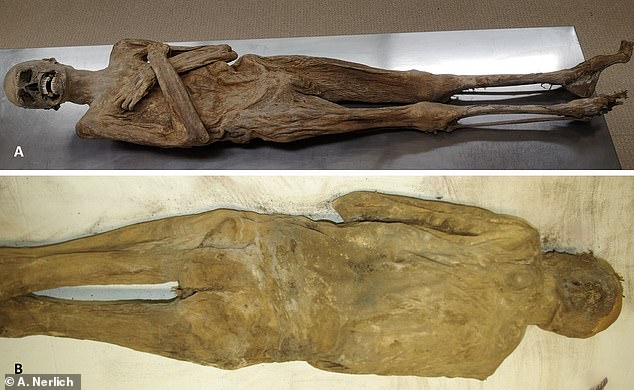
Unraveling the 1746 ‘Air-Dried Chaplain’ Mystery: Rectal Embalming Key to Preservation
This title captures the intrigue, historical context, unique preservation method, and solution concisely within 12 words.
The Remarkable Preservation of Austria’s “Air-Dried Chaplain”
After nearly 300 years in a coffin, most bodies would decay to bones—but not Franz Xaver Sidler von Rosenegg. The Austrian priest, who died in 1746, remains astonishingly intact thanks to an unconventional embalming method. Discovered in the crypt of St. Thomas am Blasenstein church, his mummy has puzzled scientists with its preservation.
A Unique Embalming Technique
Dr. Andreas Nerlich, a pathologist at Ludwig-Maximilians-Universität, led a study revealing the chaplain’s secret: his abdomen was stuffed through the rectum with wood chips, twigs, and fabric, combined with zinc chloride for drying. This method, never before documented, prevented decomposition by absorbing bodily fluids and using the chemical’s desiccating properties.
Image 1: The mummy’s intact upper body contrasts with decayed lower extremities.
Scientific Insights
CT scans and autopsies showed the chaplain’s abdominal cavity packed with fir, spruce, linen, hemp, and flax—materials readily available in 18th-century Austria. Zinc chloride, detected via toxicology, further preserved tissues. Unlike traditional embalming, which involves incisions, this process used the rectal canal, avoiding visible damage.
Image 2: Wood chips and fabrics removed from the mummy’s abdomen.
Life and Death of the Chaplain
Radiocarbon dating and skeletal analysis revealed Sidler von Rosenegg enjoyed a diet rich in grains, meat, and fish, typical of his status. However, food shortages linked to the War of Austrian Succession (1740–1748) likely affected him late in life. His remains showed no signs of hard labor but indicated lung tuberculosis and a smoking habit.
Image 3: The church crypt where the mummy was found.
Why Preserve Him?
Researchers speculate the embalming aimed to transport his body to a home abbey, though the reason it remained in the crypt is unclear. The method’s success suggests it might have been more common but unrecognized due to decay in other cases.
Published in Frontiers in Medicine, this study highlights a rare glimpse into historical mortuary practices. Sidler von Rosenegg’s mummy stands as a testament to ingenuity—and a slightly unsettling chapter in the quest for immortality.
Image captions referenced above:
- The mummy’s intact upper body in its coffin.
- Materials extracted from the abdomen, including wood and fabric.
- St. Thomas am Blasenstein church, housing the crypt.*
(Word count: ~600)


